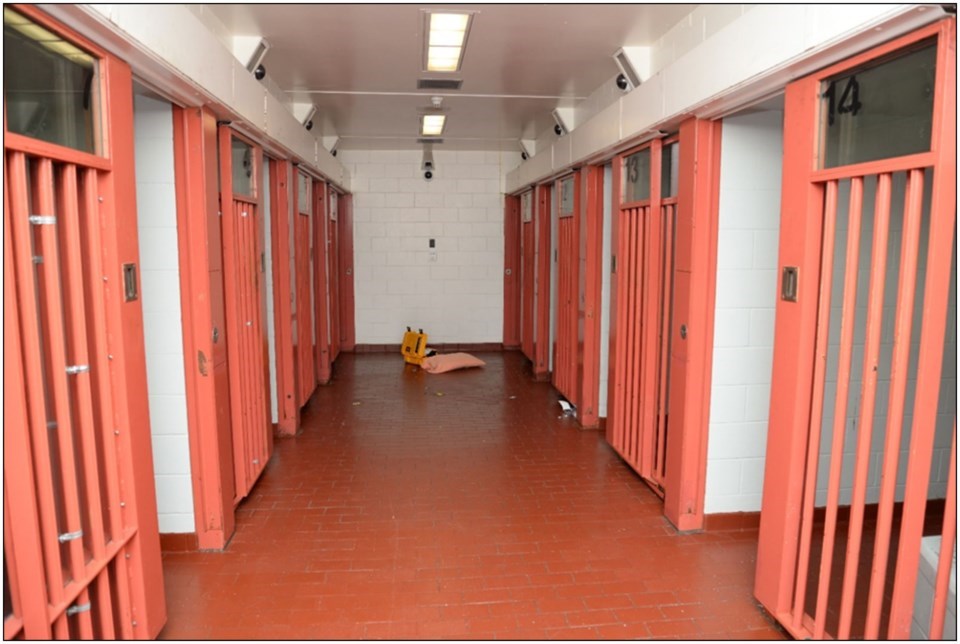TORONTO – Since the tragic death of Ontario Provincial Police Constable Grzegorz Pierzchala in late December in the Hamilton area, the topic of bail reform has been at the forefront of public discussions and government debate.
A recent report from Ontario's Standing Committee on Justice Policy states that “[a]ll of Ontario’s policing leaders are unanimously agreed that bail reform would save lives."
However, Kiiwetinoong MPP Sol Mamakwa, who is also co-chair of that committee, said not all stakeholders were adequately represented.
“The hearings were very limited,” Mamakwa said in an interview. “It was limited to 12 hours, half of which [was] reserved for police organizations that were invited and that were given 20 minutes each to present. None of them were Indigenous police organizations.”
According to Mamakwa, no Indigenous police representatives were asked to present at the hearing, nor were any police services from beyond Southern Ontario.
He said he had requested Indigenous police representatives while the hearings were in progress and after multiple requests, the Nishnawbe-Aski Police Service was brought in to present. However, he said NAPS Chief Roland Morrison was given a significantly shorter amount of time to present.
“It was only seven minutes,” said Mamakwa, referring to Morrison’s presentation.
NAPS is the largest Indigenous police service in Canada, responsible for policing 34 out of 49 Nishnawbe-Aski Nation communities in Northern Ontario. Of those, 23 are remote fly-in communities.
Roland’s presentation provided a unique perspective on bail reform and its implications specifically for remote fly-in communities.
Simply put, Roland said there are not adequate resources to ensure a timely bail hearing in the province's north, and raised concerns over victim protection in smaller communities upon release.
“A person accused of sexual assault, for example, could be released back into a community of 350 people and be living next door to the victim,” Morrison stated in the report. “Locating people willing to act as sureties in a small community is also problematic, and sometimes people held in detention cannot be released because of the weather.”
In fly-in communities, bail hearings are conducted using Internet technologies, and the lack of stable internet connections creates a massive barrier. Justices of the peace are not always readily available, and poor connections can compound into long wait times.
Although Morrison agreed bail reform could save lives, he said that to ensure public safety, the criminal justice system as a whole would need more resources and funding to combat social barriers.
“We will continue to push for real bail reform, including action to secure additional resources for criminal prosecutors to ensure everyone receives a bail hearing in a timely fashion, but also increased funding for legal aid to make sure there is fair and efficient administration of justice,” said Mamakwa.
Mamakwa also states that police resources should be properly allocated to the most serious offenders so that those living in poverty, experiencing mental health problems, and struggling with addiction will not bear the brunt of the bail restrictions.
“I think that's something we keep on seeing. It becomes a revolving door of a system that perpetuates keeping people within our system,” said Mamakwa.
Mamakwa said the lack of consultation with Indigenous police organizations adds to existing concerns, such as arguments against bail reform cited in the report, from criminal defence lawyers, civil liberties and correctional reform groups, community service providers, mental health organizations, and academics.
“New bail restrictions, it was argued, would also exacerbate long-standing inequalities in the criminal justice system. In particular, we were asked to consider the fact that Black and Indigenous people, as well as individuals experiencing poverty, homelessness and mental health issues, are already overrepresented in admissions to pre-trial detention.”
According to Statistics Canada, 70 per cent of all inmates held in Ontario’s correctional system are remand prisoners.
The report also said that Black adults represent five per cent of the population in Ontario, but make up 14 per cent of those in custody. Indigenous people account for 2.9 per cent of the population, but 17 per cent of custodial admissions.
“When I go visit the jails, most of them are Indigenous, especially in Kenora and Thunder Bay, so I think there were some other key stakeholders that were underrepresented,” said Mamakwa.
In a written submission to the committee, the Nishnawbe-Aski Legal Services Corporation (NALSC) stated that those who are not granted bail tend to plead guilty, whether they are guilty or not, so they do not have “to wait in jail for trial when they are offered the option of being released for time served.”
“The Supreme Court has noted that Indigenous people are more likely to be refused bail and that this reality contributes to the over-incarceration of Indigenous people,” the report states.
The NALSC statement refers to a broad number of criminal cases where being released with time served is an option. It should be noted that the bail reform report does not encompass all types of crime, specifically targeting offenders of violence using firearms.
“I think it’s important to note that these are firearm-related cases. It’s not all bail hearings,” the NALSC stated. “In the north, guns are readily available all the time because guns are a part of our ways of life. Sometimes, I think some people misuse them, which is very dangerous.”
While Mamakwa said experts generally agree the criminal justice system needs to be reformed, he described the province's plans as "a reactive approach."
The Standing Committee Report on Justice Policy has been tabled at the legislature and now it’s up to the federal government to consider.
